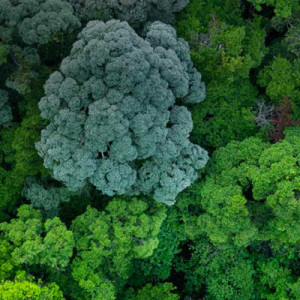More than meets the eye
 At The Star Roundtable on Palm Oil 2015 held at Menara Star in Petaling Jaya, Selangor, recently, The Star’s executive editor Errol Oh led the forum joined by Malaysian Palm Oil Council (MPOC) chief executive officer Tan Sri Dr Yusof Basiron, United Plantations Bhd vice chairman and chief executive director Datuk Carl Bek-Nielsen, Boustead Plantations Bhd chief operating officer Chow Kok Choy, United Malacca Bhd chief executive officer Peter Benjamin and National Association of Smallholders (NASH) president Datuk Aliasak Ambia.
At The Star Roundtable on Palm Oil 2015 held at Menara Star in Petaling Jaya, Selangor, recently, The Star’s executive editor Errol Oh led the forum joined by Malaysian Palm Oil Council (MPOC) chief executive officer Tan Sri Dr Yusof Basiron, United Plantations Bhd vice chairman and chief executive director Datuk Carl Bek-Nielsen, Boustead Plantations Bhd chief operating officer Chow Kok Choy, United Malacca Bhd chief executive officer Peter Benjamin and National Association of Smallholders (NASH) president Datuk Aliasak Ambia.
Topics: The haze blanketing the region; the role of the Council of Palm Oil Producing Countries; Trans-Pacific Partnership Agreement (TPPA) impact on the industry; Roundtable on Sustainable Palm Oil (RSPO)’s take on labelling; outlook for CPO price in 2016; and, MPOC’s campaign in Europe to counter negativity against palm oil.
THE annual haze has been a long-standing problem, which the palm oil industry gets dragged into every year. How does it affect the local plantation industry and how can this be resolved?
Yusof: There was a mild version of El Nino last year which probably set the process of dryness early this year in certain areas. This is followed by stronger El Nino signs which further induced a lot of dryness in Papua New Guinea, Sabah, Kalimantan and Sumatra (mostly oil palm growing areas).
Scientists say the combination of daily high temperature and low humidity is prone to massive wildfire outbreak which contributed to the creation of haze in the region. Furthermore, the dryness from El Nino doesn’t allow the rain to fall in a timely manner to enable the haze to be washed away. It is a very complex situation, compounded by the south-westerly winds blowing the haze downwind to Peninsular Malaysia.
So, please do not entirely blame the palm oil industry. If you have oil palm planted in the affected area, you will definitely guard it with all your means to prevent fires from destroying the young plantations. Kalimantan has only over three million hectares or 6% of the total 54 million hectares of land currently cultivated with oil palm. The fires are happening outside these planted areas. I believe there must be a way to resolve the wildfire outbreak because it is a recurring problem.
Once the forest is destroyed by fire, subsequent regrowth will be prone to subsequent fires as well. This is the danger. So unless we solve this problem, we are not likely to enjoy clean air in the future as well.
Benjamin: Having spent some years in Indonesia, this phenomenon is an annual occurrence. The different provinces in Indonesia have different sets of regulation as far as the Land Act is concerned. Most of the provinces do allow smallholders to burn not more than two hectares but usually, it doesn’t stop there, particularly if you burn on peat soil land because it will be out of control. So, these regulations need to be changed.
Plantations which are RSPO members or advocates of sustainability, even those who do not advocate sustainability, strictly adhere to the zero-burning policy from long time ago. In Indonesia, we need to understand that the smallholders there will resort to easy ways to develop the land. So, the Indonesian authorities must find ways to help them. Find a solution to help smallholders develop the land without burning.
Stricter regulations or financial assistance as well as educational awareness should be put in place to prevent these fire outbreaks. Oil palm cultivation is one way of poverty eradication in Indonesia, which has a population of over 230 million.
Bek-Nielsen: The haze in every aspect is a very negative thing for South-East Asia because it hits so broadly, affecting us all. Indonesia has suffered the most both in terms of quality of life not to mention the serious implications this has had on the respiratory system of several million people, also here in Malaysia. Financially the haze has cost Indonesia some US$15bil and it is poised to become one of the worst manmade disasters ever.
But we must ask ourselves: Why is this taking place? In this respect many of those who are affected, especially in urban areas, have had a tendency to shoot from the hip, missing the complexity of this tragedy altogether.
Here we must recognise that Indonesia has enormous challenges, to name a few they have the world’s fourth largest population totalling 250 million people living on thousands of islands covering the distance from London to Tehran. Eighty million Indonesians live without electricity today and about 40 million Indonesians live on less than US$2 a day. Poverty is widespread.
How can one therefore expect the poor to hire bulldozers for land preparation when a box of matches is so much cheaper. These facts coupled with cultural practices and laws that permit smallholders to clear and burn up to 2ha of land without facing any consequences is one of the main issues at hand. And when you couple this with El Nino, a year with several months with hardly any rain, well the stars are aligned for a disaster. I sympathise with the Indonesians and I believe that they will now make concerted efforts to minimise the risk of this recurring as the toll on the Indonesian people has without doubt been the hardest.
Nevertheless I can also fully appreciate why the haze has become an emotional issue for many. However when emotions run high, it is also important that we do not enter into “scapegoat” mode polarising the debate, so to say, by singling out the palm oil industry as the main culprit behind the haze. This is simply besides the point and totally off the mark.
Whilst there has been a number of fires in oil palm concessions, we must appreciate that the Washington DC-based World Resources Institute using NASA Active Fire Data recently released a report showing that there was a total of 7,301 fire alerts in Indonesia from this October, of which 1,659 were high confidence fires. This is serious, but diving deeper into the data one will also see that 46% of these fire alerts were confined to pulpwood plantations, 43% were outside concessions meaning wildfires or fires caused by for example smallholder fires, 5% of all fires were within logging concessions with 6% being within oil palm concessions. So, of the total 1,659 high confidence fires, 99 could be found within oil palm concessions – the majority of which were non- RSPO producers. So yes, even though oil palm concessions accounted for 6% of the high incidence fires, this is still a serious problem and the palm oil industry must buckle up.
But what I am trying to say is that the soft media and people who make sweeping remarks on social media against the palm oil industry should just try and understand the complexity of the problem before making a full-blown judgment. We must stick to facts and not start torturing the data to ensure a specific outcome. This is wrong and it is unfair. What we should be focusing on are things like tighter laws, better education, improved practices and above all, an avenue for the less privileged to have a better life. Here we all have a role to play.
Aliasak: The haze is a nuisance. But everything is either a product of Nature or man-made. If it is caused by people, there should be ways to control it. Indonesian President Joko Widodo is often quoted in the media as saying that his country’s farmers are poor and the only way for them to earn a living is to plant oil palm. But the cost (for them to clear land for cultivation) is very high if they don’t slash and burn.
We cannot blame the Indonesian smallholders for open burning and the resulting severe haze across the region. The Indonesian authorities should educate the farmers on proper land clearing practices. Otherwise, the haze would reduce palm oil yield.
Chow: As a grower, the haze affects the photosynthesis of the oil palm thus affecting the quality of the fresh fruit bunches (FFB) and causing lower crop production. This scenario will have an impact going forward to next year. With the haze currently emanating from Indonesia, one must understand that even in years without the El Nino phenomenon, it still happens. What is basically happening is that people are developing on land (i.e. peat soil) where the top and subterranean burning cannot be controlled.
In the past, Malaysia too had a similar problem when we did not practise sustainable development. Our plantations now practise zero-burning policy and have put in place a proper drainage system to maintain the water levels to ensure that water can be pumped back into the drains, particularly during the dry season. I believe if this sort of cultivation system is extended to the smallholders under a dedicated authority or agency to educate the Indonesian farmers, then we won’t get the haze or open burning situation.
In Malaysia now, the amount of peat burning is almost non-existent on cultivated oil palm land.
The haze problem will not be solved unless Indonesia educates its farmers on the best agricultural practices and the correct peat soil development methods.
Source: The Star (7 November 2015)










Leave a Reply